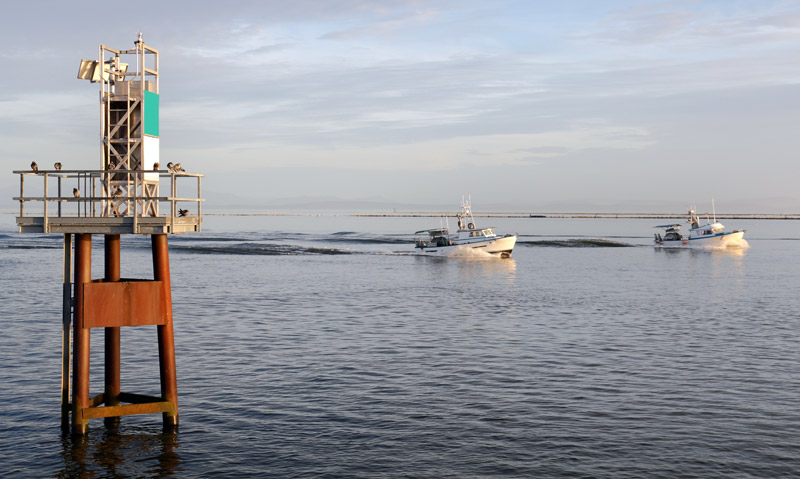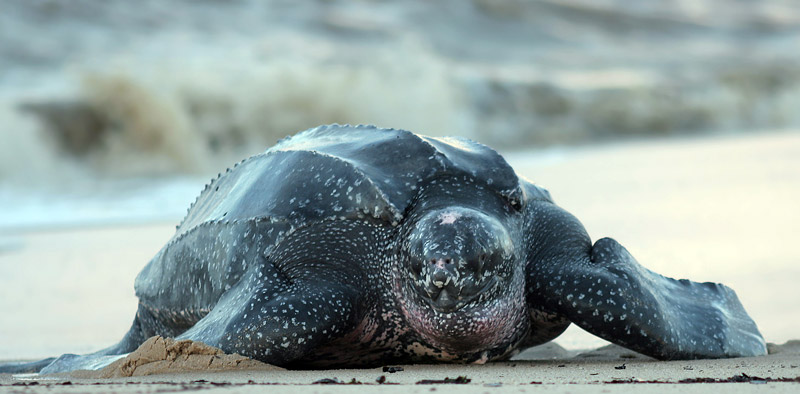In a move to protect turtles and marine mammals such as whales, and dolphin, the Pacific Fishery Management Council decided on Sept. 14 to place strict limits on the number of endangered marine mammals and sea turtles that can be injured or killed in the California-based swordfish drift gillnet fishery. The move follows an unsuccessful attempt in May with a California state bill that would have completely banned landings of all swordfish caught by gillnets.
Currently, the fishery operates in US EEZ (exclusive economic zone) waters 12-200 miles off the coast, mostly between San Diego and Cape Mendocino. The swordfish large mesh drift gillnet (DGN) fishery on the U.S. West Coast is co-managed by NOAA Fisheries, the Pacific Fishery Management Council, and the State of California.
Marc Levine (D-San Rafael) and chair of the Assembly Water, Parks and Wildlife Committee said “One California gillnet swordfish fishery kills more dolphins and whales than all other West Coast and Alaskan fisheries combined and throws away more fish than it keeps. This is unacceptable and must stop.”
The new limits and bans will be monitored by federal fishery observers aboard the fishing vessels. These observers will monitor 30 percent of the fishery in the next two fishing years, increasing to 100 percent in 2018.
The limits set by the Pacific Fishery Management Council are specific to nine species:
|
Species |
Limit/Cap |
Current Status |
| Fin whales |
2 |
Endangered |
| Humpback whales |
2 |
Endangered |
| Sperm whales |
2 |
Endangered |
| Leatherback sea turtles |
2 |
Endangered |
| Loggerhead sea turtles |
2 |
Endangered |
| Olive ridley sea turtles |
2 |
Endangered |
| Green sea turtles |
2 |
Endangered |
| Short-fin pilot whales |
4 |
Not listed but low population |
| Common bottlenose dolphins |
4 |
Not listed but low population |
If federal observers see the number hit the cap on any of those species during a two year period, the fishery will be immediately closed for the remainder of the season (May 31 to Jan. 31) and the entirety of the subsequent season.
Swordfish are commonly caught using drift gillnets, which is an unanchored panel of stretched mesh (14 inches or greater) suspended vertically in the water by floats along the top and weights along the bottom. The use of drift nets longer than 2.5 kilometres (1.5 miles) on the high seas was banned by the United Nations in 1991. Prior to this ban, drift nets reached lengths of up to 60 kilometres (37 miles) long.
The drift gillnet fishery grew in the 1970s off southern California, targeting common thresher, shortfin mako and swordfish. Drift gillnet gear is anchored to a vessel, and drifts along with the current for a number of hours. To help protect mammals, the nets US fishermen use are required to have mammal deterrents (pingers that emit an unpleasant sound) on the nets.
Drift gillnets can span up to a mile, covering the equivalent of 21 football fields. Fishermen set them out at night to catch swordfish, but the problem is, they also catch most everything else, including critically endangered marine mammals.
Researchers have found “set buoy” gear has been shown to be very effective in catching swordfish, and only creates about a five-percent bycatch. The gear is dropped during the day and targets swordfish in their daytime habitat in the deep sea where there is little else but forage fish.
Deep-set buoy gear involves dropping a line with a hook deep below the surface. The method allows for the capture of swordfish, while minimizing the capture of unintended species. Unfortunately, deep set buoys have been declared illegal on the West Coast due to past fishermen leaving them in the sea and never retrieving them, creating a continuous cycle of death on the unattended gear.


